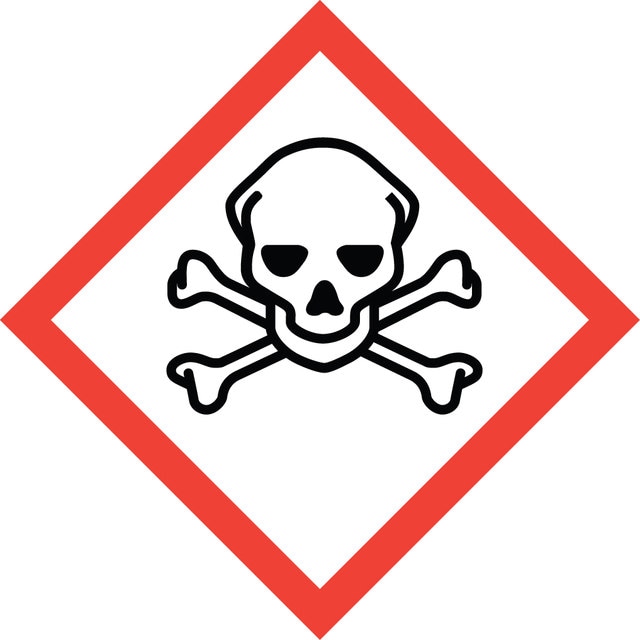Sign In to View Organizational & Contract Pricing
Select a Size
About This Item
Empirical Formula (Hill Notation):
C9H7Cl2N5
CAS Number:
Molecular Weight:
256.09
MDL number:
UNSPSC Code:
41116107
PubChem Substance ID:
NACRES:
NA.24
grade
pharmaceutical primary standard
API family
lamotrigine
manufacturer/tradename
USP
application(s)
pharmaceutical (small molecule)
format
neat
SMILES string
Nc1nnc(c(N)n1)-c2cccc(Cl)c2Cl
InChI
1S/C9H7Cl2N5/c10-5-3-1-2-4(6(5)11)7-8(12)14-9(13)16-15-7/h1-3H,(H4,12,13,14,16)
InChI key
PYZRQGJRPPTADH-UHFFFAOYSA-N
Gene Information
Looking for similar products? Visit Product Comparison Guide
Biochem/physiol Actions
Anticonvulsant.
Analysis Note
These products are for test and assay use only. They are not meant for administration to humans or animals and cannot be used to diagnose, treat, or cure diseases of any kind.
Signal Word
Danger
Hazard Statements
Precautionary Statements
Hazard Classifications
Acute Tox. 3 Oral
Storage Class Code
6.1C - Combustible acute toxic Cat.3 / toxic compounds or compounds which causing chronic effects
WGK
WGK 3
Flash Point(F)
Not applicable
Flash Point(C)
Not applicable
Choose from one of the most recent versions:
Already Own This Product?
Find documentation for the products that you have recently purchased in the Document Library.
Effect of Permeation enhancers on diffusion of lamotrigine drug through cellophane membrane.
Rao, Vinay, et al.
American Journal of Advanced Drug Delivery, 1.4, 606-610 (2013)
Allyson K Friedman et al.
Science (New York, N.Y.), 344(6181), 313-319 (2014-04-20)
Typical therapies try to reverse pathogenic mechanisms. Here, we describe treatment effects achieved by enhancing depression-causing mechanisms in ventral tegmental area (VTA) dopamine (DA) neurons. In a social defeat stress model of depression, depressed (susceptible) mice display hyperactivity of VTA
Philip J Wiffen et al.
The Cochrane database of systematic reviews, 12(12), CD006044-CD006044 (2013-12-04)
This is an update of the original Cochrane review entitled Lamotrigine for acute and chronic pain published in Issue 2, 2007, and updated in Issue 2, 2011. Some antiepileptic medicines have a place in the treatment of neuropathic pain (pain
Philip J Wiffen et al.
The Cochrane database of systematic reviews, (2)(2), CD006044-CD006044 (2011-02-18)
This is an update of the original Cochrane review published in Issue 2, 2007. Some antiepileptic medicines have a place in the treatment of neuropathic pain (pain due to nerve damage). This updated review adds five new additional studies looking
Jacqueline A French et al.
Neurotherapeutics : the journal of the American Society for Experimental NeuroTherapeutics, 9(1), 176-184 (2011-12-06)
The efficacy and safety of lamotrigine extended-release tablets (LTG XR) as monotherapy for partial seizures were evaluated using the conversion-to-monotherapy design, and historical data as the control. This methodology was recently approved by the United States Food and Drug Administration
Our team of scientists has experience in all areas of research including Life Science, Material Science, Chemical Synthesis, Chromatography, Analytical and many others.
Contact Technical Service